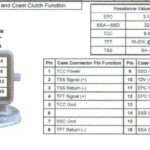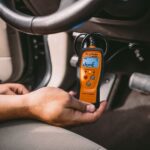The Honda H22A engine, renowned for its performance capabilities, often sparks debate among enthusiasts regarding the optimal choice between OBD1 and OBD2 versions. While OBD1 offers simplicity in swapping and a potentially more robust closed-deck block, the prevalence of OBD2 engines in the current market makes them more readily accessible. This guide delves into the intricacies of the H22a Obd1 To Obd2 conversion, addressing key considerations and potential challenges.
One common point of discussion revolves around transmission selection. While the M2B4 transmission is available, opting for a standard non-LSD H22A transmission coupled with an aftermarket limited-slip differential (LSD) is often recommended. Aftermarket LSDs generally outperform their OEM counterparts, especially considering the age of most OEM units. Moreover, sourcing parts for the larger OEM units, which were not sold in the US, can prove difficult. Aftermarket units are not compatible with the M2B4.
The Euro R variant of the H22A is often lauded as the pinnacle of the H22A family. However, their scarcity and high cost make them a less practical choice for many. Identifying counterfeit Euro R engines can be challenging, adding further complexity to the acquisition process. Building a comparable setup using a less expensive H22A engine and aftermarket modifications can often yield similar or even superior performance at a lower cost. Furthermore, the base JDM or USDM H22A benefits from readily available replacement parts in the US market, unlike the Euro R, which may have certain components that are difficult to source domestically.
A popular and effective setup involves using a base JDM H22A engine, a USDM P13 ECU, and an M2F4 transmission equipped with a Quaife or MFactory LSD. Further enhancements can include Delta 272 camshafts, a DC Sports header with a 2.5″ collector, a Euro R intake manifold, and a meticulously tuned chipped P28 ECU.
Ultimately, the decision to convert from OBD1 to OBD2 hinges on individual preferences and project goals. While OBD1 offers certain advantages, the availability and parts support for OBD2 engines make them a compelling option. Careful consideration of transmission choices, engine variations, and potential upgrades will ensure a successful and satisfying H22A build.


